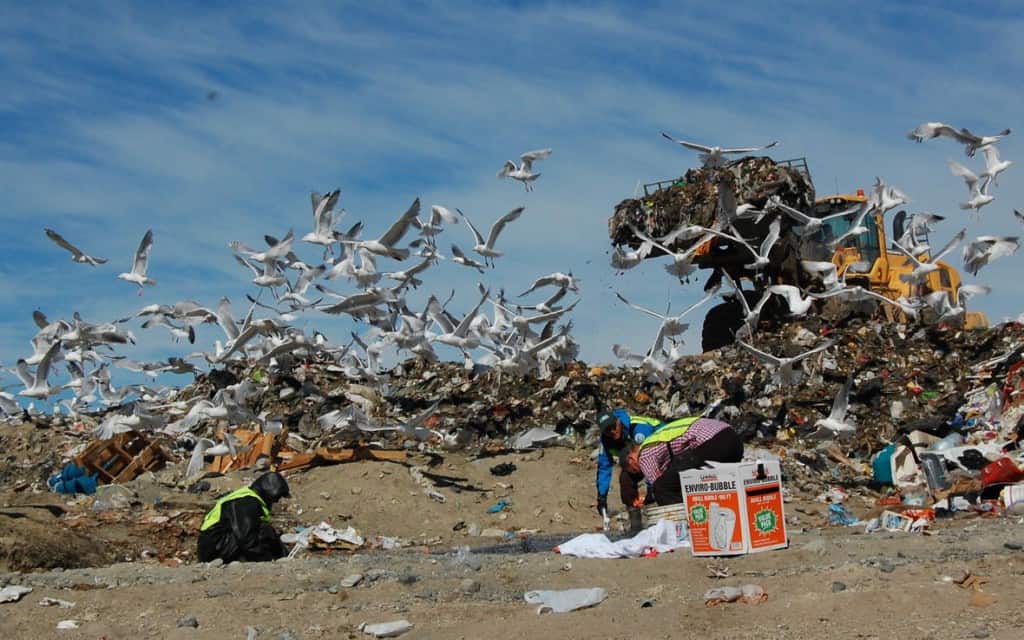Share this article
Gulls affected by bacteria in more populated areas
While Alaskan gulls are often infected with the common bacteria E. coli, it appears that some strains found in the birds have developed a resistance to antibiotics. And we might have something to do with it.
As part of a study published in Infection Ecology and Epidemiology, scientists examined whether antibiotic resistant strains of E. Coli that were discovered in the last few years were more prevalent in populated areas of southcentral Alaska.
“Essentially, we were looking to see if human inputs into the environment might be contributing to the presence of antibiotic resistant E. coli and what that relationship might look like,” said Andy Ramey, a research scientist with the U.S. Geological Survey and the second author in the study.
In past studies, Ramey’s coauthors found antibiotic resistant E. coli in gulls in Barrow, Alaska which is a large community with thousands of people. In this study, the researchers looked at the bacteria in gulls in a more populated area of southcentral Alaska — a popular tourist destination as well as home to a large number of hunters and anglers.
As part of the research, the team collected feces of glaucous winged gulls (Larus glaucescens), herring gulls (Larus argentatus) and hybrids at the Soldotna landfill and along the Kenai River. Next, they flew approximately 175 miles south to Middleton Island — which is a lot smaller and quieter — and collected fecal samples of the island’s glaucous winged gulls for comparison with the Kenai samples.

Scientists Andrew Ramey, Bjorn Olsen and Jonas Bonnedahl set up a trap for gulls at the Sodoltna landfill in June 2016. ©Andrew Reeves
To test the fecal samples for antibiotic resistant bacteria, Ramey and his colleagues cultured E. coli and placed them in a petri dish alongside the antibiotic. E. coli that had developed a resistance to the antibiotic grew close to it over the next several days, forming a halo around the dish; bacteria that were susceptible to antibiotics didn’t show this change. The researchers found that 55 percent of the samples on the Kenai River were antibiotic resistant whereas only 8 percent on Middleton Island showed a similar resistance.
While the bacteria don’t seem to negatively impact infected gulls, Ramey says this study offers insight into how anthropogenic factors could affect our wildlife and environment. For example, disposing antibiotics improperly can cause them to get into the water, resulting in this resistance. Further, the antibiotic resistant bacteria could potentially spread to other wildlife or infect fish and subsequently enter people’s diets.
Ramey and his colleagues are continuing to study the antibiotic resistant E. coli in gulls. Last summer, they tracked gulls with satellite transmitters around Alaska to determine where the gulls might be dispersing and how antibiotic resistant bacteria might be distributed across the landscape. But for now, Ramey suggest a few things that can help lessen the impact of antibiotic resistant bacteria in the environment.
Ramey says there are already some policy changes underway such as reducing the use of antibiotics in livestock production. “Responsible use of antibiotics and disposal is important,” he said. “Perhaps there should be consideration in regards to how waste, water and landfills are managed to minimize their interaction between wildlife and the environment and water sources and where antibiotics are present in the environment.”
Header Image: USGS scientist John Reed holds a gull marked with a satellite transmitter at the Soldotna landfill in June 2016. ©Lee Tibbits








